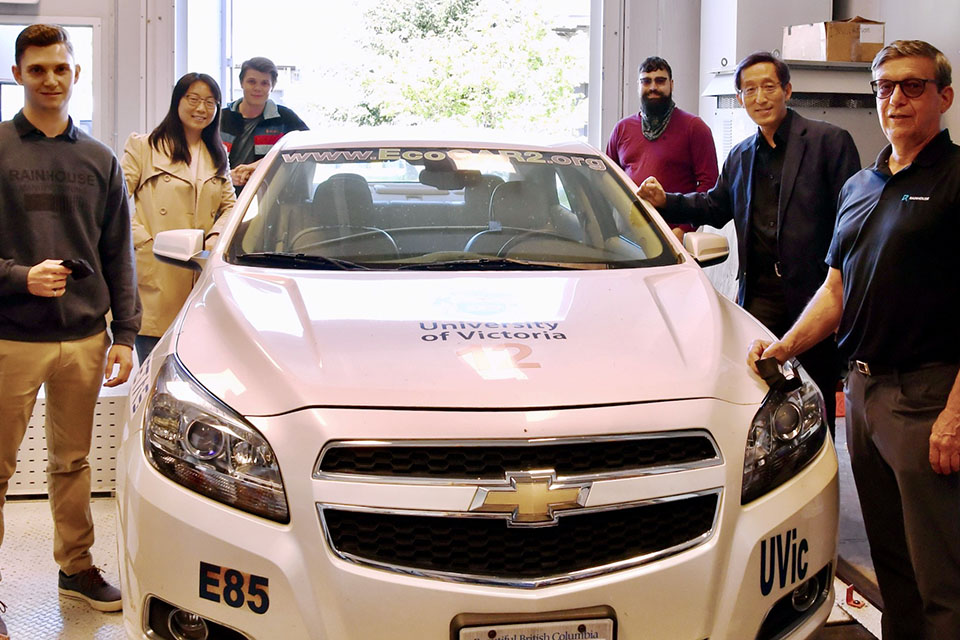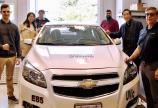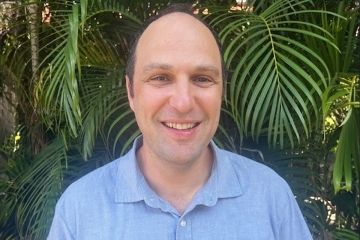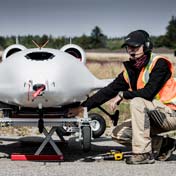A voltage boost for Vancouver Island’s EV capacity
- Anne Tolson

A Victoria-based company with plans to manufacture green-energy products will be leaning heavily on UVic research expertise as it expands into the electric vehicle and stationary storage markets.
Starting this spring, Rainhouse Canada will begin establishing homegrown capability in manufacturing fully functional battery packs. Initially, the packs will be designed for two applications: an electric utility truck and an off-grid energy storage system (ESS). Rainhouse has subcontracted UVic mechanical engineering professor Zuomin Dong to help in modelling, designing, optimizing and testing the products—ensuring they meet the design requirements for bringing the products to market.
These initial steps, which are part of Rainhouse’s longer-term business plan, are being funded with $200,000 from the BC government.
Rainhouse is among 24 businesses across the province receiving funding aimed at making BC more secure in the face of global supply chain interruptions and accelerating post-pandemic economic growth. Over time, as its new business grows, Rainhouse plans to manufacture and certify a wide range of custom battery packs and electric ESS for a variety of applications that could include ground, marine and air transportation, ocean research, and alternate energy sources for remote communities.
“This project represents the first step in a long journey and, in that sense, it’s very significant,” says Dong, who leads UVic’s Clean Transportation Research Team.
“The end goal is to establish the BC- and Victoria-based expertise and manufacturing capabilities that can customize the design and fabrication of battery energy storage systems for a wide variety of industry and community applications.”
Dong’s work will include ensuring the battery pack is structurally sound, determining how much heat a pack generates, figuring out how to remove the heat and accurately predicting the pack’s lifespan.
Opportunities in an expanding industry
In its first 20 years in business, Rainhouse has excelled at machining materials for other organizations. Now, says President Ray Brougham, the time is right for the company to launch its own line of manufactured products.
“We’re embarking on quite a visionary track, because battery electric vehicles (BEVs) and other ESS solutions are exploding,” says Brougham. “Over time, our goal is to have a range of products; but to start, the goal is to develop a battery pack that’s functional and meets the customer’s needs.”
The first battery pack will be custom-built for use in a road-worthy electric utility truck being manufactured by Canadian Electric Vehicles—another Vancouver Island business, and the third partner named in the provincial funding agreement. At the same time, Rainhouse will work on developing an ESS that can store renewable energy from off-grid generation. Because physical size isn’t such a concern in the off-grid ESS application, the company will investigate the potentials of incorporating recycled BEV batteries.
“Even though a car’s battery may have expired, it still may have six to 20 years of life left in it,” Brougham explains. “We want to mine expired battery packs for their best cells and use them in energy storage systems.”
Rainhouse’s plan isn’t to mass-produce battery packs, but rather to provide custom solutions for niche markets, in sectors such as transportation, marine research, remote communities and more.
University-industry connections multiply outputs
Brougham, who graduated from UVic Engineering in 2001, has maintained close ties with the faculty over the years.
We’re really going to lean on UVic for this project, and I don’t see the research lab requirement going away. Hopefully, we’re going to challenge UVic’s research and battery testing labs more and more so that we can keep improving on what’s out there.
—Ray Brougham, UVic alum and president of Rainhouse Canada
Brougham, who is passionate about increasing manufacturing capability locally, across BC and Canada, believes collaboration is crucial in making it happen.
In a separate project, Rainhouse is relying on another UVic mechanical engineering researcher to solve one of the largest metal processing challenges in industry—known as “chatter.” Keivan Ahmadi and his Dynamics and Digital Manufacturing Lab have been subcontracted to help develop an anti-vibration control system for computer numerical control (CNC) machines and tools. Called ToolSense,the project involves a consortium partnership with the NRC’s Aerospace Manufacturing Technologies Center and key members of the Swedish manufacturing industry.
“Our goal is to offer a range of products and be the best, and you have to keep improving your product as the technology changes,” Brougham says.
“So, I see us working with these UVic researchers for the foreseeable future—as long we’re building and growing a business, we’re going to be involved with them.”
Photos
In this story
Keywords: engineering, mechanical engineering, electrical engineering. co-op, research, administrative, alumni, sustainability, technology
People: Zuomin Dong, Ray Brougham, Keivan Ahmadi





